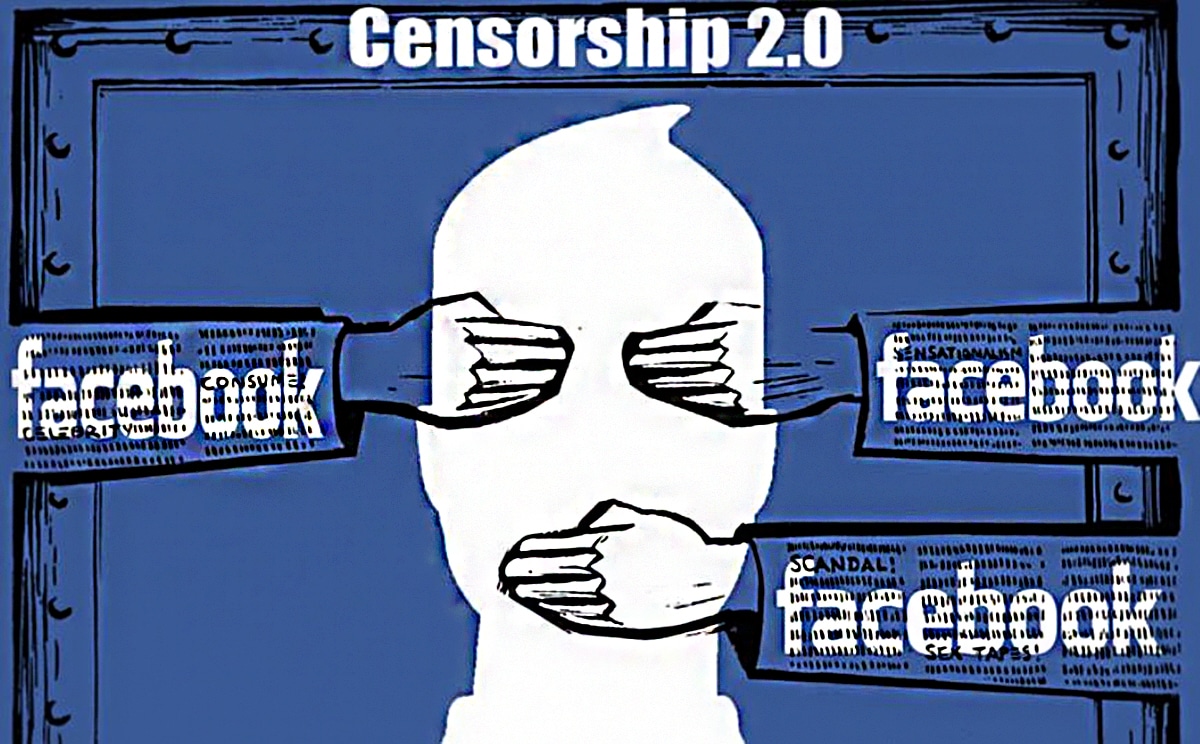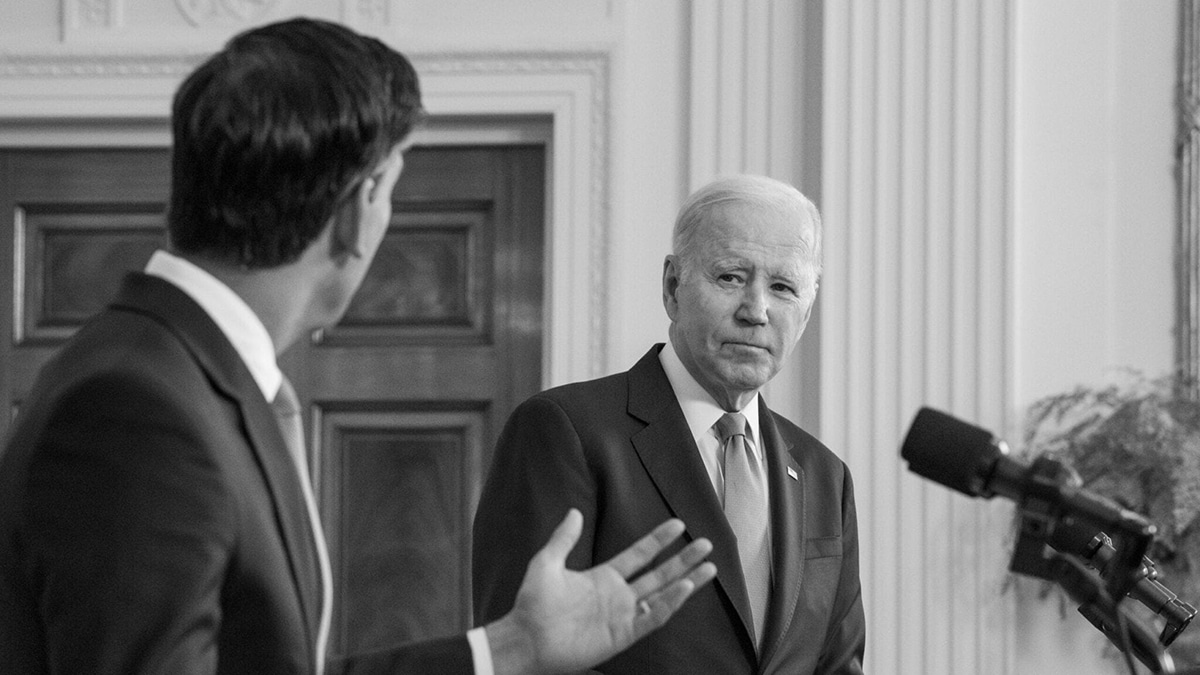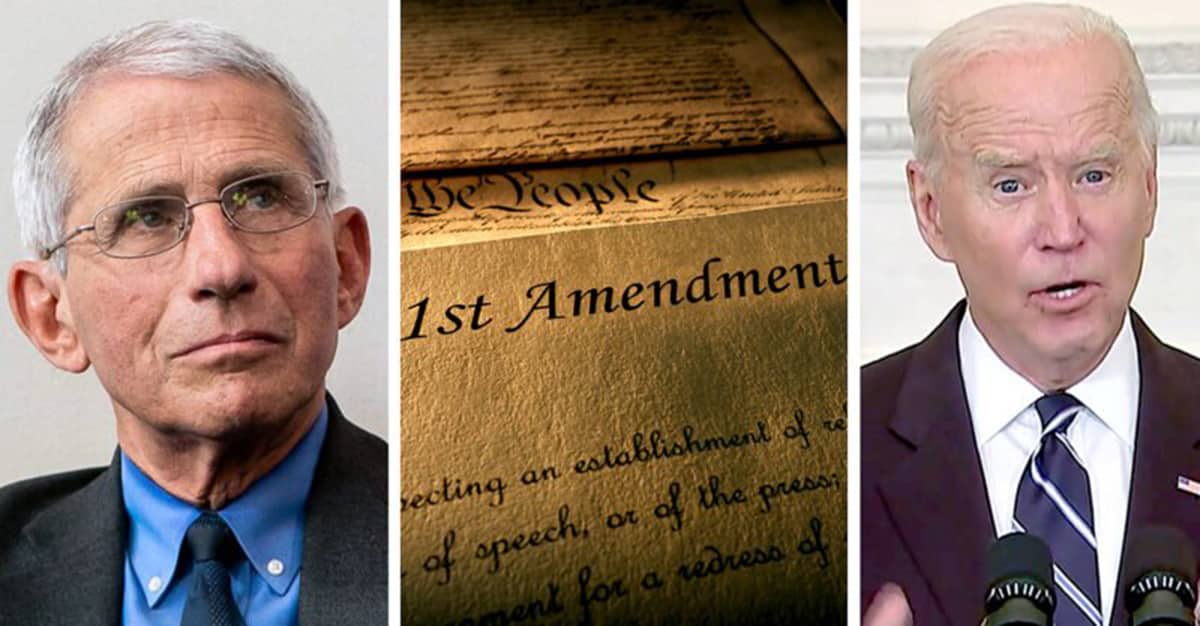

Missouri v. Biden – Court Denies Government’s Motion for Dismissal
by | Mar 27, 2023
In our Missouri v. Biden case, the judge recently denied the government defendants’ motion to dismiss the case (except for claims against President, which are generally disfavored by the court). The upshot of this ruling is that the case will now move to trial.
Greg Piper, reporting on the ruling at Just the News, writes:
The Biden administration is facing an existential threat to the government-wide regime it set up to curtail purported misinformation about COVID-19, elections and Hunter Biden’s laptop, as a federal judge knocked down all but one challenge to a censorship lawsuit by Louisiana, Missouri and doctors.
Not only have the plaintiffs established standing to sue and sufficiently alleged that federal coercion is responsible for the suppression of their comments on Facebook, Twitter, LinkedIn and YouTube, but it’s likely to keep happening without intervention, U.S. District Judge Terry Doughty wrote in a 77-page ruling that clears the way for a trial.
“Their allegations are more than complaints of past wrongs,” the Monroe, La.-based judge said, referring to the non-state plaintiffs, including epidemiologists Jay Bhattacharya and Martin Kulldorff, coauthors of the anti-lockdown Great Barrington Declaration, and psychiatrist Aaron Kheriaty, fired by the University of California Irvine for refusing its COVID vaccine mandate.
“The threat of future censorship is substantial, and the history of past censorship is strong evidence that the threat of further censorship is not illusory or merely speculative,” Doughty wrote.
The states have plausibly alleged the administration trampled on their “quasi-sovereign interests” in “protecting the freedom of expression of their residents” and enjoying “the benefits that are to flow from participation in the federal system,” namely First Amendment rights, the judge said.
The defendants got only a single win, and not cleanly. Doughty dismissed the sought injunction against President Biden but said it’s an open question whether he’s subject to declaratory relief that resolves the legal rights of the parties, due to uncertain case law.
Piper contrasts the success so far in our case with other similar cases that courts have not allowed to proceed this far:
Unlike previous failed censorship lawsuits led by COVID analyst Justin Hart and theoretical cognitive scientist Mark Changizi, the states and doctors have thoroughly fleshed out “the full picture,” the ruling says, finding that statements by federal officials were “tied temporally” and “directly coincide[d] with the deboosting, shadow-banning, and account suspensions” cited in the lawsuit.
The plaintiffs alleged a “full scheme of coordination” that went beyond “a few sporadic statements by a single congressman,” he wrote, referring to the Association of American Physicians and Surgeons’ failed lawsuit against then-House Intelligence Committee Chair Adam Schiff (D-Calif.) for pressuring social media companies to censor purported vaccine misinformation.
The states can also credibly claim to have suffered direct censorship, Doughty concluded. Soon after a raft of public censorship demands, including President Biden’s “killing people” accusation, YouTube censored the Louisiana Department of Justice’s videos of its residents “criticizing mask mandates and COVID-19 lockdown measures.” It also pulled down St. Louis County public meetings where residents challenged the evidence for mask mandates.
The plaintiffs got their ammunition from extensive legal discovery, including depositions by then-National Institute of Allergy and Infectious Diseases Director Anthony Fauci, CDC public affairs official Carol Crawford and FBI Special Agent Elvis Chan, among others.
The government’s defense that it was just helping social media companies abide by their terms of service, and that the appearance of centralized coordination across different platforms was just coincidental, looks increasingly implausible in the face of the evidence uncovered in our case, as Piper notes:
“The ruse that it was just a coincidence that all the tech companies silenced the same people saying the same things at the same time has been exposed for the canard it is,” New Civil Liberties Alliance Senior Litigation Counsel John Vecchione, who is representing the doctors, said in a press release.
Doughty wasn’t impressed with the feds’ reasoning that they can’t be sued due to sovereign immunity. Many of the “central claims” by the plaintiffs are based on stopping the Biden administration from violating the First Amendment or dozens of officials across agencies from acting outside their powers by demanding “de facto prior restraints,” he said.
The plaintiffs also “have the better argument” that the feds violated the Administrative Procedure Act through “discrete agency action in the form of targeted censorship,” even if coercing and colluding with social media to censor “disfavored speakers and viewpoints” doesn’t constitute “final agency action,” according to Doughty.
The judge compared the feds’ alleged actions to those of a “legislatively-created” Rhode Island commission that sent official notices to distributors that certain books and magazines “had been declared objectionable for sale or distribution,” constituting state censorship attempts.
He cited then-White House Press Secretary Jen Psaki’s public demand to censor the “Disinformation Dozen,” which includes anti-vaccine activist Robert F. Kennedy Jr., and Surgeon General Vivek Murthy’s request for information from social media companies, which is plausibly “an implied threat of future regulation.”
The Department of Homeland Security’s repeated bulletins identifying misinformation and disinformation as “domestic terror threats” are arguably state actions that “social-media companies would not lightly disregard,” the judge said. So are the voluminous records of “significant encouragement” to censor that federal officials gave social media privately.
These are distinct from the California Office of Elections Cybersecurity’s practice of flagging Facebook and Twitter posts as “erroneous or misleading,” which the 9th U.S. Circuit Court of Appeals recently deemed “attempts to convince” because they didn’t come with “any threat or attempt at coercion,” Doughty said.
The crucial issue in our case is whether the government’s censorship activities constitute state action. The ruling made it clear that direct threats against social media companies by government officials are only one among several methods that could constitute state censorship action, which is clearly forbidden by the First Amendment. In a crucial passage, the ruling explains this as follows:
Traditionally, the First Amendment imposes limitations only on “state action, not action by private parties.” Lloyd Corp., Ltd. v. Tanner, 407 U.S. 551, 567 (1972). However, plaintiffs “may establish a First Amendment claim based on private conduct if that conduct ‘can fairly be seen as state action.’” Id. (quoting Rendell-Baker v. Kohn, 457 U.S. 830, 838 (1982)). There is no single test to identify state action and state actors, but the Supreme Court has “identified a host of facts that can bear on the fairness of such an attribution” of state action. Brentwood Acad. v. Tennessee Secondary Sch. Athletic Ass’n, 531 U.S. 288, 294, 296 (2001). Government action can exist in at least five circumstances: (1) action that results from the State’s exercise of “coercive power,” id. at 295, 298 (quoting Blum v. Yaretsky, 457 U.S. 991, 1004 (1982)); (2) action that results from the state providing “significant encouragement, either overt or covert,” to a private action, id. (quoting Blum, 457 U.S. at 1004); (3) action that results from a private actor operating as a willful participant in joint activity with the State or its agents, id. (quoting Lugar v. Edmondson Oil Co., 457 U.S. 922, 941 (1982)); (4) action that is entwined with governmental policies, or when the government is entwined in the management or control of the private action, id. (quoting Evans v. Newton, 382 U.S. 296, 299 (1966)); and (5) action with specific features that combines to create a compelling case for state action, especially where a federal statute has immunized private conduct. Skinner v. Ry. Lab. Executives’ Ass’n, 489 U.S. 602, 615 (1989).
As Piper summarizes, the court found plausible evidence in our Complaint for all five of these forms of state action:
The feds have not come close to distinguishing their alleged actions, especially threatening antitrust enforcement against resistant tech platforms and revoking their Section 230 liability immunity, from the conduct that courts have repeatedly deemed state action, he found.
This threat plausibly became “more forceful” when Democrats took control of the White House and Congress and President Biden appointed Merrick Garland as attorney general, giving him power to “unilaterally institute antitrust actions against social-media companies,” the ruling says.
It’s more than the “arms-length” relationship between the California elections office and social media companies, which constituted “a single message from an unidentified member of a state agency to Twitter,” Doughty said.
Fauci and officials from the CDC, FBI, DHS and State Department allegedly participated in “a formal government-created system” comprising meetings to discuss censorship, “privileged reporting channels” and “funding and establishing federal-private partnership to procure censorship of disfavored viewpoints,” the ruling says.
It’s irrelevant that the plaintiffs aren’t challenging the constitutionality of Section 230, whose liability shield for tech platforms is worth “billions of dollars per year,” Doughty told the feds.
They allege that using the liability shield “as a metaphorical carrot-and-stick combined with the alleged back-room meetings, hands-on approach to online censorship, and other factors” turns the private censorship into state action, which plausibly qualifies as “joint participation, entwinement … subsidization, authorization, and encouragement.”
These clearly constitute “viewpoint discrimination and prior restraints” in violation of the First Amendment and APA if proven, Doughty said.
Here are a few more quick highlights from the ruling:
- Contrary to the government’s claims, we the plaintiffs (both the states of MO and LA and the private plaintiffs) have standing to bring the case: “The Court finds that the Plaintiffs have satisfied Article III’s standing requirements.” The court also ruled, “Because Plaintiffs have adequately alleged injury-in-fact, traceability, and redressability, Defendants’ Motion to Dismiss is DENIED on the grounds of Article III standing.”
- As to the government’s claim of sovereign immunity, the court found, “Sovereign Immunity does not bar Plaintiffs’ First Amendment claims… Defendants have ignored the basic principle that parties may seek to enjoin federal officials from violating the Constitution.” In other words, the judge reminded the federal government that the U.S. Constitution remains the highest law of the land and applies to everyone, including government officials. Who would have thought? Furthermore, the ruling explained, “Parties are entitled to sue for injunctive relief against federal officials in their official capacity for actions beyond their statutory authority.” For these reasons, “Defendants’ Motion to Dismiss is DENIED on sovereign immunity grounds.”
- Regarding the merits of our Complaint, “The Court finds that Plaintiffs have stated plausible claims on the merits in all counts of the Complaint.” Crucially, “The Court finds that the Complaint alleges significant encouragement and coercion that converts the otherwise private conduct of censorship on social-media platforms into state action, and is unpersuaded by Defendants’ arguments to the contrary.”
- “Further, while the Government may certainly select the messages it wishes to convey, this freedom is limited by the more fundamental principle that a government entity may not employ threats to limit the free speech of private citizens…. Accordingly, the Court finds that Plaintiffs have plausibly alleged state action under the theory of significant encouragement and/or coercion.”
- “Plaintiffs have plausibly alleged joint action, entwinement, and/or that specific features of Defendants’ actions combined to create state action…. Combined with other factors such as the coercive statements and significant entwinement of federal officials and censorship decisions on social-media platforms… this serves as another basis for finding government action.”
- “Because the Complaint alleges state action, Plaintiffs plausibly state a claim for violation of the 1st Amendment via government-induced censorship.… Plaintiffs have plausibly alleged prior restraints and viewpoint discrimination, which are clear violations of the 1st Amendment.”
- The court explains, “The First Amendment, subject only to narrow and well-understood exceptions, does not countenance governmental control over the content of messages expressed by private individuals.” The court found, “Plaintiffs have clearly and plausibly alleged that Defendants engaged in viewpoint discrimination and prior restraints.”
- In conclusion, the judge ruled, “Because Plaintiffs have adequately alleged each claim in the Complaint, Defendants’ Motion to Dismiss is DENIED on Rule 12(b)(6) grounds.”
To summarize, the court accepted virtually all of our arguments in the case and rejected virtually all of the government’s counter-arguments. As the case now moves to trial it is increasingly clear that this could become the most important free speech case of our generation.
Onwards!




